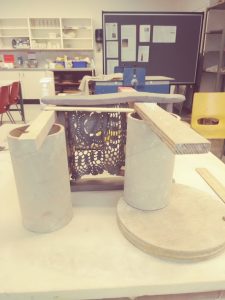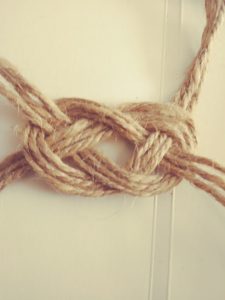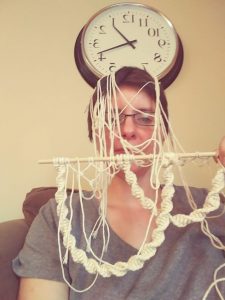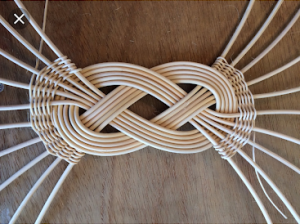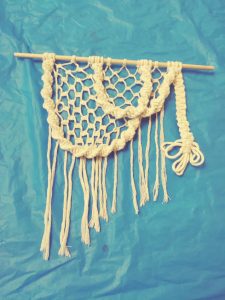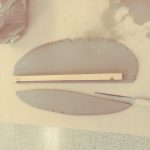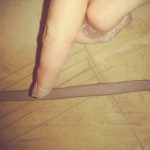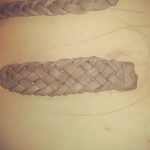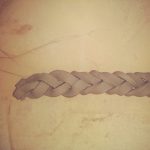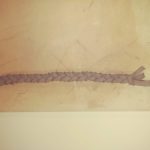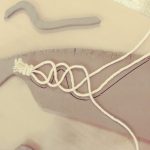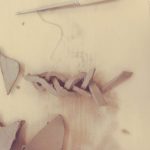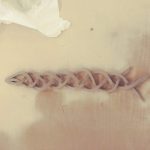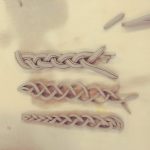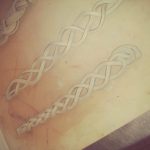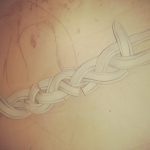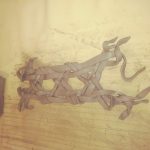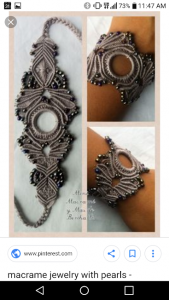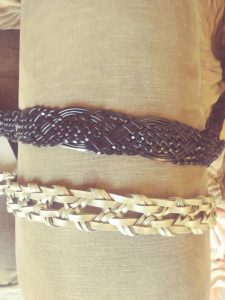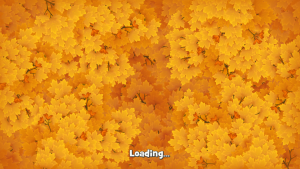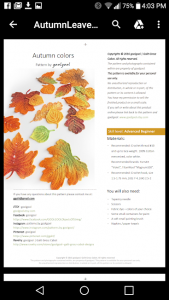Robert Pepperell’s article “Artworks as Dichotomous Objects: implications for the scientific study of aesthetic experience,” reveals the source of the tension in representational art objects.
He states: “Representational artworks are dichotomous in that they present us with two distinct aspects at once. In one aspect we are aware of what is represented while in the other we are aware of the material from which the representation is composed. The dichotomy arises due the incompatibility, indeed contradiction, between these aspects of awareness, both of which must be present if we are to fully appreciate the artwork.”
This relates to my work. For example, Not a Window is representational of a window, but an observer can also see that the curtain has been fabricated from a doily. Yet it is not a doily, because it is clay. So, it is clay pretending to be a doily pretending to be a curtain in a window frame that is not a window frame but is clay.
[insert final image of window here]
Pepperell explains that there are levels of simultaneous awareness in appreciating dichotomous art. “First, we are aware of the discrepancy between the matter from which the artwork is composed and what it represents; second, we are aware of discrepancies between the way things are represented in the artwork and how we would expect them to look in reality; and third, we are aware of many distinct conflicting meanings that attach to the same work at the same time.” His research indicates there is a sweet spot related to distortion that artists employ. If it is too close to reality and the piece does not challenge our predetermined concept of how that object should appear; the observer may be impressed, but quickly loses interest. If a representation is too distorted, the viewer struggles to engage at all. This point varies depending on the experience of the viewer. An art connoisseur is likely to develop a stronger preference for more challenging work.
Returning to Not a Window, I was initially disappointed when the top beam of the frame bowed when it fired, but it was a fortunate development. The curvature draws attention to the materiality of the piece. I can see ways to increase the surreal quality of other windows. I could
- capture the gesture of a curtain billowing in the breeze;
- press the frame into tree bark and create a reverse impression; or
- leave lumpy clay at the bottom instead of finishing the work.
All of these could make the work more challenging and interesting.
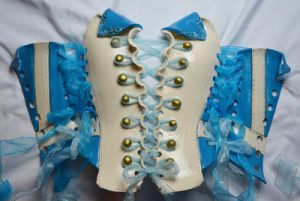 idually “tailored” ceramic corsets:
idually “tailored” ceramic corsets: 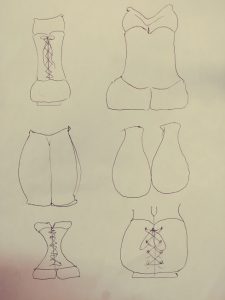
 So, fuddling cups.
So, fuddling cups.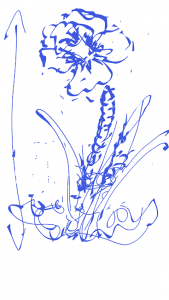


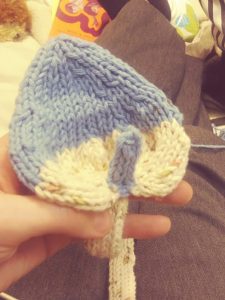
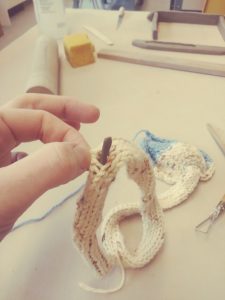
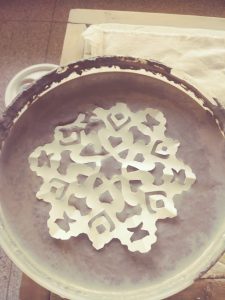


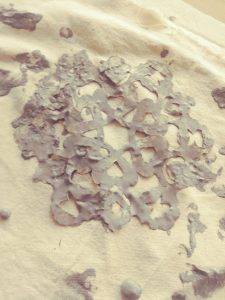
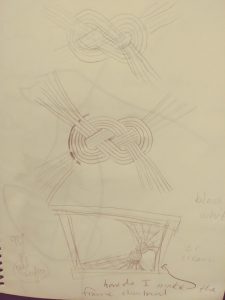

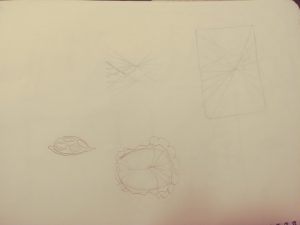
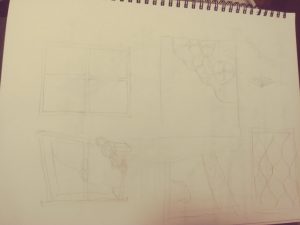

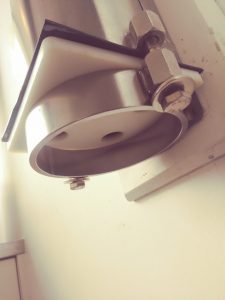
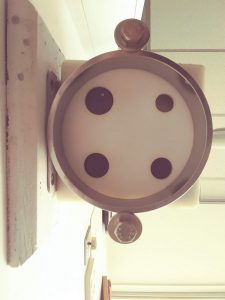


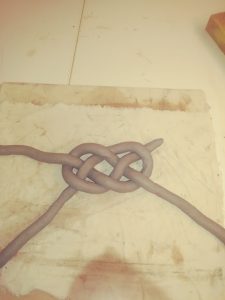

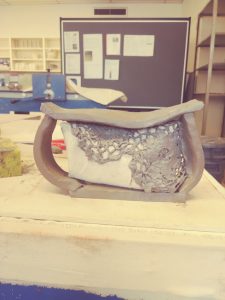 For my second try, I allowed the frame much more time to stiffen up. I also supported it while it dried.
For my second try, I allowed the frame much more time to stiffen up. I also supported it while it dried.